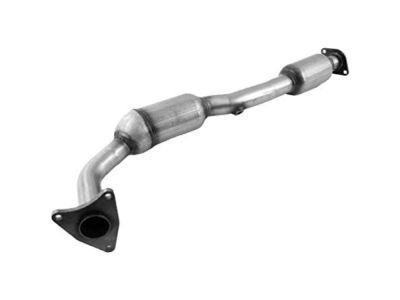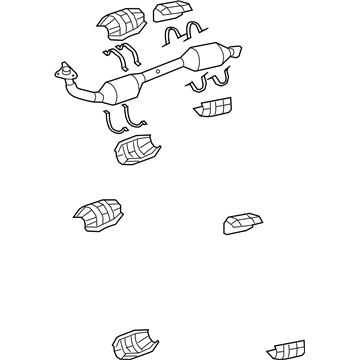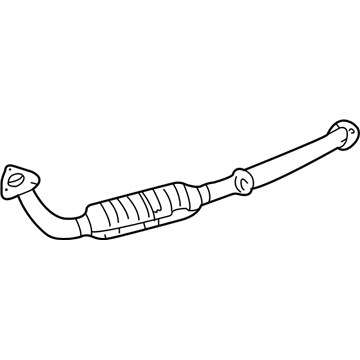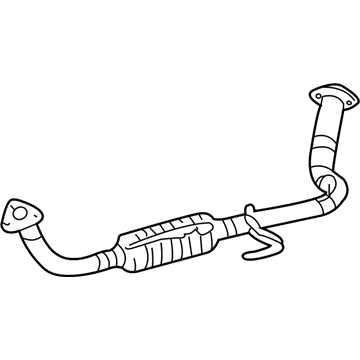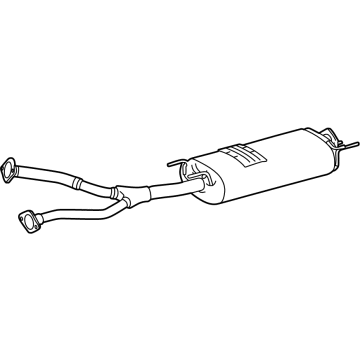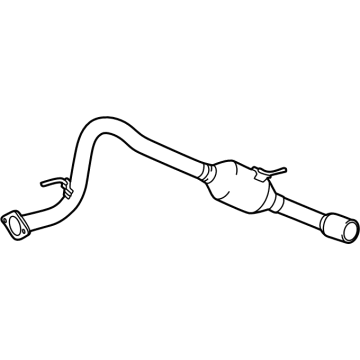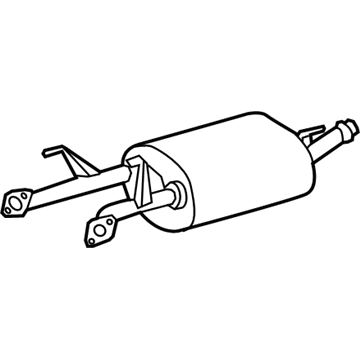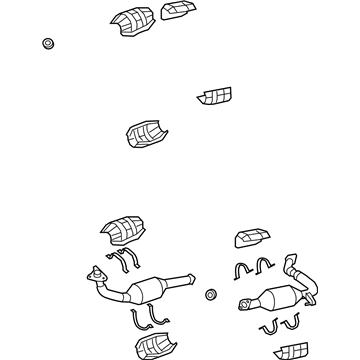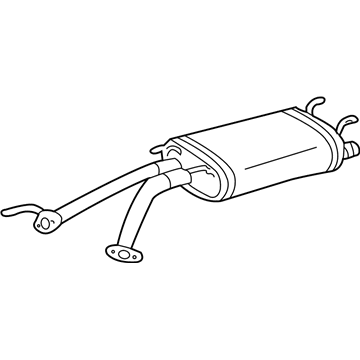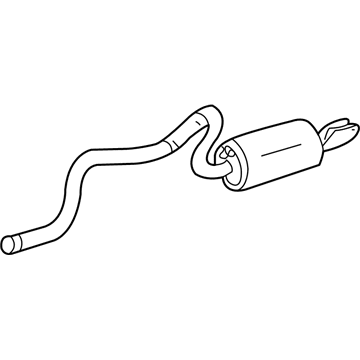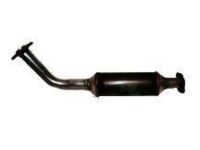×
ToyotaParts- Hello
- Login or Register
- Quick Links
- Live Chat
- Track Order
- Parts Availability
- RMA
- Help Center
- Contact Us
- Shop for
- Toyota Parts
- Scion Parts
My Garage
My Account
Cart
OEM Toyota Sequoia Exhaust Pipe
Exhaust Tail Pipe- Select Vehicle by Model
- Select Vehicle by VIN
Select Vehicle by Model
orMake
Model
Year
Select Vehicle by VIN
For the most accurate results, select vehicle by your VIN (Vehicle Identification Number).
25 Exhaust Pipes found

Toyota Sequoia Converter & Pipe, Passenger Side
Part Number: 17410-0F080$1551.06 MSRP: $2081.97You Save: $530.91 (26%)Ships in 1-3 Business DaysToyota Sequoia Converter & Pipe, Front Driver Side
Part Number: 17450-0F110$1597.61 MSRP: $2144.47You Save: $546.86 (26%)Ships in 1-3 Business DaysToyota Sequoia Center Pipe
Part Number: 17420-F4040$528.10 MSRP: $708.87You Save: $180.77 (26%)Ships in 1-3 Business DaysToyota Sequoia Front Pipe
Part Number: 17410-F4010$135.23 MSRP: $175.34You Save: $40.11 (23%)Ships in 1-3 Business DaysToyota Sequoia Tail Pipe
Part Number: 17430-F4020$363.53 MSRP: $487.96You Save: $124.43 (26%)Ships in 1-3 Business DaysToyota Sequoia Front Pipe
Part Number: 17410-0S020$1659.02 MSRP: $2226.88You Save: $567.86 (26%)Ships in 1-3 Business DaysToyota Sequoia Muffler & Pipe, Center
Part Number: 17420-0S040$485.20 MSRP: $651.28You Save: $166.08 (26%)Toyota Sequoia Front Pipe, Driver Side
Part Number: 17450-0F060$1887.61 MSRP: $2533.72You Save: $646.11 (26%)Toyota Sequoia Front Pipe, Driver Side
Part Number: 17450-0S040$1779.44 MSRP: $2388.53You Save: $609.09 (26%)Ships in 1-3 Business DaysToyota Sequoia Front Pipe, Driver Side
Part Number: 17450-0S210$1452.90 MSRP: $1950.21You Save: $497.31 (26%)Ships in 1-3 Business DaysToyota Sequoia Intermediate Pipe, Center
Part Number: 17403-0F030$613.12 MSRP: $822.98You Save: $209.86 (26%)Ships in 1-2 Business DaysToyota Sequoia Front Pipe, Driver Side
Part Number: 17450-0S140$1846.75 MSRP: $2478.87You Save: $632.12 (26%)Ships in 1-3 Business DaysToyota Sequoia Front Pipe, Driver Side
Part Number: 17450-0S230$2203.82 MSRP: $2958.16You Save: $754.34 (26%)Ships in 1-3 Business DaysToyota Sequoia Front Pipe
Part Number: 17410-0F090$1934.48 MSRP: $2596.64You Save: $662.16 (26%)Ships in 1-3 Business Days
| Page 1 of 2 |Next >
1-20 of 25 Results
Toyota Sequoia Exhaust Pipe
Choose genuine Exhaust Pipe that pass strict quality control tests. You can trust the top quality and lasting durability. Shopping for OEM Exhaust Pipe for your Toyota Sequoia? Our website is your one-stop destination. We stock an extensive selection of genuine Toyota Sequoia parts. The price is affordable so you can save more. It only takes minutes to browse and find the exact fit. Easily add to cart and check out fast. Our hassle-free return policy will keep you stress-free. We process orders quickly for swift delivery. Your parts will arrive faster, so you can get back on the road sooner.
The Toyota Sequoia Exhaust Pipe is one of the vital parts that speak of the reliability and performance associated with the Toyota vehicles. Az exhaust pipe intended to quickly vent nasty gases like carbon monoxide from the engine, l the pipe guarantees that these, ugly emissions do not find their way into the car's cabin; thus improving passenger safety. Designed to fit for different models of Toyota Sequoia, this exhaust pipe is one of the crucial components that keep your engine at its prime and your car efficient. It is normally mounted at a place most suitable for the release of the gas and out of reach of moving objects on the road, usually at the doors' side. The Toyota Sequoia Exhaust Pipe constructed from heavy metals that do not corrode easily and it is built to last long; a cracked or rusted exhaust pipe may rattle or leak dangerous fumes. Also, referring to the pipe's construction, it is worth to note that the shape of the exhaust pipe can be different depending on the years and generation of Toyota Sequoia, where the usage of several pipes might be indicated to ramp up the car's performance. This again not only enhances the flexibility of the vehicle but also aids to set up a great comfort drive. The car Toyota Sequoia has been endorsed for nominations in the North American Truck of the Year Awards which clearly states it standing in the market for automobiles. Being one of the most popular models of automobiles across the globe, a Toyota Sequoia Exhaust Pipe meets stringent quality standards that are related to safety, efficiency, and performance and is an emblem of the Toyota company's dedication to improving automobile technologies.
Toyota Sequoia Exhaust Pipe Parts and Q&A
- Q: How to install the exhaust pipe and its components on Toyota Sequoia?A:The installation of the exhaust pipe begins by installing the 4 converter protector stays and monolithic converter protector with 4 bolts and 4 nuts torque to 11 Nm (107 kgf-cm, 8 ft-lbf) while maintaining the protector within the specified angle range. The configuration of heated Oxygen Sensor for Bank 1 Sensor 2 requires Special Service Tool: 09224-00010 and a torque magnification of 40 Nm (408 kgf-cm, 30 ft-lbf) when using the tool or 44 Nm (449 kgf-cm, 33 ft-lbf) without with a torque wrench fitted at a fulcrum length of 300 cm (11.8 in.). The installation procedure using Special Service Tool 09224-00010 should be repeated for the Bank 1 Sensor 1 air fuel ratio sensor. Position the new gasket on the front No. 2 exhaust pipe assembly before installing three new nuts with torque specifications at 54 Nm (554 kgf-cm, 40 ft-lbf). Then connect each of the heated oxygen sensor and air fuel ratio sensor connectors. The No. 1 monolithic converter protector must use four bolts and four nuts with a torque setting of 11 Nm (107 kgf-cm, 8 ft-lbf). The front No. 3 exhaust pipe sub-assembly can be installed using two bolts combined with two nuts which should be torqued to 48 Nm (489 kgf-cm, 35 ft-lbf). The installation of the No. 1 monolithic converter protector should be performed exactly like before. The installation of the heated oxygen sensor for Bank 2 Sensor 2 requires Special Service Tool: 09224-00010, which should be torqued according to the previous specifications. Perform the same installation method for the air fuel ratio sensor which belongs to Bank 2 Sensor 1. Install a new gasket onto the front exhaust pipe assembly while fixing it with 3 new nuts and torquing them to 40 ft-lbf (40 ft-lbf, 40 ft-lbf). Afterward connect the sensor connectors. The center exhaust pipe assembly requires two new gaskets during installation while its connection to three pipe supports should be done through four bolts torqued up to 48 Nm (489 kgf-cm, 35 ft-lbf). Use a new clutch gasket to connect the tail exhaust pipe assembly while maintaining a clamp torque force to 32 Nm (326 kgf-cm, 24 ft-lbf) with correct clamp orientation and examine for exhaust gas leaks.
- Q: How to remove the exhaust pipe assembly on Toyota Sequoia?A:The first step for exhaust pipe assembly removal requires separating the tail exhaust pipe assembly through bolt and clamp removal alongside exhaust pipe support disconnect and center exhaust pipe assembly gasket removal. You must start by disassembling the center exhaust pipe assembly by removing its four bolts and unclipping three exhaust pipe supports before taking off the two gaskets from the front exhaust pipe assembly and front No. 3 exhaust pipe sub-assembly. First disconnect the air fuel ratio sensor connector together with the heated Oxygen Sensor connector and two clamps from the front exhaust pipe assembly before removing its three nuts and gasket. Special Service Tool: 09224-00010 is required to uninstall the Bank 2 Sensor 1 air fuel ratio sensor. Special Service Tool: 09224-00010 functions to extract the heated oxygen sensor for Bank 2 Sensor 2. Start by removing the 4 bolts and 4 nuts on the monolithic converter protector before proceeding with the No. 1 monolithic converter protector in the same way. The front No. 3 exhaust pipe sub-assembly requires users to remove its 2 bolts and 2 nuts while disconnecting the exhaust pipe support before taking out the gasket from the front No. 2 exhaust pipe assembly. Perform the previous process to remove the No. 1 monolithic converter protector once again. When dealing with the front No. 2 exhaust pipe assembly users should disconnect the air fuel ratio sensor connector and heated oxygen sensor connector followed by loosening the 3 nuts. The removal process for both the Bank 1 Sensor 1 air fuel ratio sensor and Bank 1 Sensor 2 heated oxygen sensor requires Special Service Tool: 09224-00010. Execute the removal of the final monolithic converter protector by unfastening its 4 bolts and 4 nuts.
